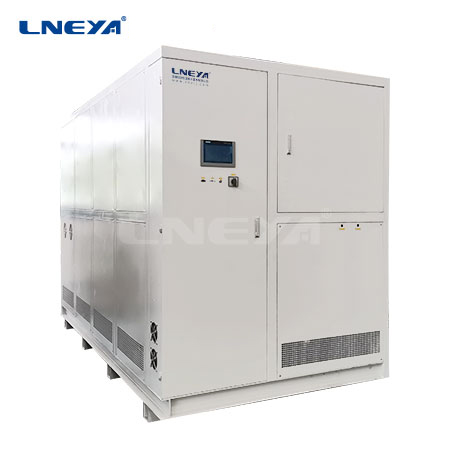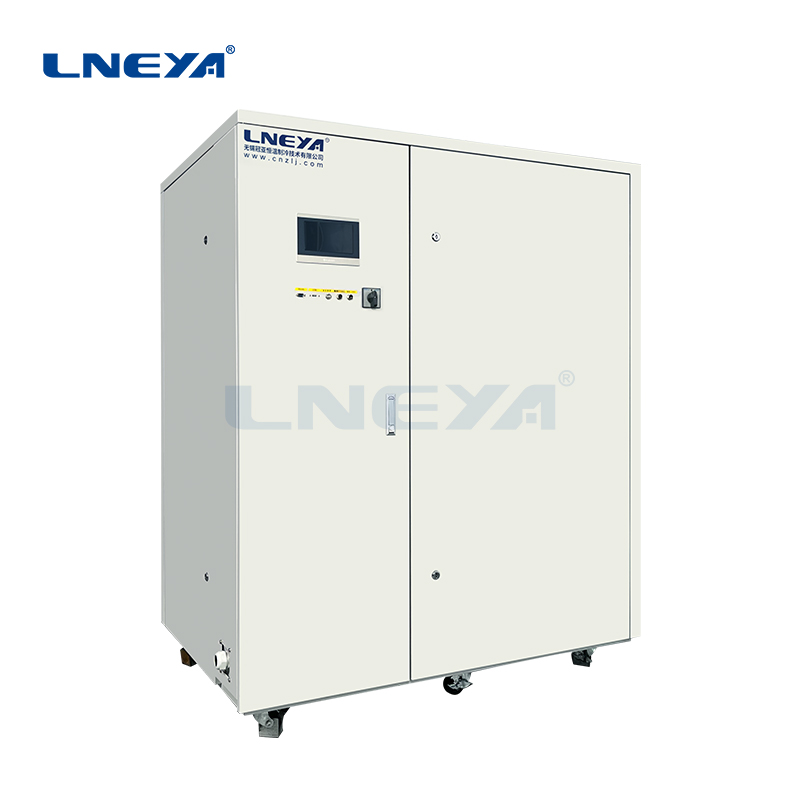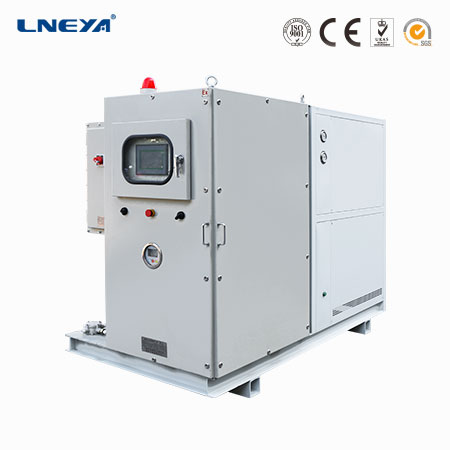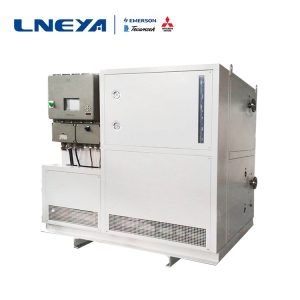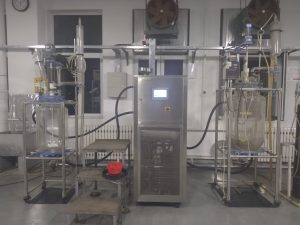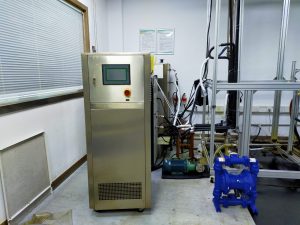
main differences between indoor chillers and outdoor chillers
Although indoor chillers and outdoor chillers are both devices used to provide cold water to meet specific cooling needs, they have significant differences in design, installation location, working environment, and heat dissipation methods.
The following are the main differences between indoor chillers and outdoor chillers:
Installation location:
Indoor chiller: As the name suggests, installed inside buildings such as computer rooms, equipment rooms, laboratories, data centers, etc., located in the same indoor environment as the cooled equipment or system.
Outdoor chiller: installed outside buildings, such as roofs, terraces, dedicated equipment platforms, or floors, separated from the cooled equipment, usually in an open or semi open outdoor environment.
Working environment:
Indoor chiller: The working environment is relatively stable, less affected by external climate changes, and factors such as temperature, humidity, and dust are relatively controllable. But it is necessary to consider the ventilation, noise control, and coordinated layout with other equipment in the indoor space.
Outdoor chiller: Directly exposed to outdoor climate conditions, the working environment changes greatly, and needs to cope with various weather conditions (such as high temperature, low temperature, wind and rain, sand and dust, etc.), and may face greater corrosion risks. Design should consider measures such as rain protection, sun protection, dust prevention, frost resistance, and anti heat island effect.
Heat dissipation method:
Indoor chiller: Heat dissipation is usually achieved through air-cooled or water-cooled condensers. The air-cooled indoor chiller uses a built-in fan to directly discharge the heat generated by the condenser into the indoor air, which is then discharged through the indoor ventilation system. The water-cooled indoor chiller is connected to a cooling tower or cooling water system to transfer heat to the outside through the circulation of cooling water.
Outdoor chiller: It often uses air-cooled condensers to use outdoor air for natural or forced convection heat dissipation. Outdoor chillers are usually equipped with large air flow fans and large-area heat dissipation fins to enhance heat dissipation efficiency. In cold regions, antifreeze devices such as electric heaters or hot gas bypass valves may also be required.
Noise control:
Indoor chiller: Due to its installation indoors, there are high requirements for noise control, and noise reduction measures are usually designed, such as soundproof covers, silencers, low-noise fans, etc., to reduce the impact on the working environment.
Outdoor chiller: Although installed outdoors and relatively less sensitive to noise, it still needs to comply with certain environmental standards and community regulations. Some high-end outdoor chillers adopt appropriate noise reduction designs, but overall, their noise control requirements are slightly lower compared to indoor chillers.
Maintenance convenience:
Indoor chiller: Due to its relatively concentrated location, it is easy for daily inspection and maintenance. But it may be necessary to consider the entry and exit channels of indoor space, equipment relocation, and coordination with other facilities.
Outdoor chiller: During maintenance, it may be necessary to consider safe climbing, harsh weather conditions, and compatibility with the building’s exterior. However, due to its distance from the work area, the impact of maintenance operations on normal operations is relatively small.
Installation costs and limitations:
Indoor chillers: Factors such as indoor space occupation, ventilation facility renovation, and increased air conditioning load may need to be considered, especially in places with limited space or special environmental requirements (such as clean rooms), where installation costs and complexity may be high.
Outdoor chiller: It is necessary to consider outdoor installation conditions such as building structural load-bearing, waterproofing, lightning protection, drainage, power supply, insulation, as well as possible regulatory limitations such as urban planning, environmental protection, and noise control.
In summary, there are significant differences between indoor and outdoor chillers in terms of installation location, working environment, heat dissipation method, noise control, maintenance convenience, installation cost and limitations. The selection of which type should be based on factors such as actual application environment, building conditions, cooling requirements, cost budget, and local regulations.
- More
LTZ Inverter M Series
APPLICATIONS Suitable for application to the target temperature control object already has a cold storage tank and a circulating pump, and the medium is transported into the LTZ M series refrigeration temperature control unit through th…
- More
LN -60°C~ -10°C
适用范围 Product Features 产品参数 Product Parameter 行业应用 APPLICATION 航空航天材料|试验装置控温解决方案 在航空航天领域,材料的性能直接关系到飞行器的安全、可靠性和…
- More
LT -80℃~-20℃
It can guarantee 24-hour continuous operation Circulating refrigeration of ethylene glycol mixed with water mixture 1. Can use ethylene glycol mixed with water for circulating refrigeration, saving resources 2.Cir…
- More
- More
LTZ Variable Frequency M series
It is suitable for the target temperature control object that already has a cold storage tank and a circulating pump. The medium is transported to the LTZ M series refrigeration unit through the circulating pump, which is a closed-loop refri…
- More
LTG Screw Chiller Units
It is suitable for various production process cold sources in chemical, pharmaceutical, machinery and other fields, and can provide -110℃~30℃ refrigeration medium, which can be used as ice storage, low temperature air supply and ot…
- More
ZLTZ Efficient Heat Exchanger Series
The ZLTZ temperature control unit is combined with a microchannelreactor to form a high heat release temperature control application.Under the same f…
- More
LT-800 mini chiller
The image only shows the connection effect Widely used in low temperature conditions requiring chemical, biological and physical experiments at low temperatures.It can be c…
- More
LJ -45°C~ -10°C
Fast cooling and low cooling temperature -5~-150°C Water Cooling LNEYA specializes in the production of single-fluid cryogenic chillers. The refrigeration temperature ranges from -150°C to -5°C, which can mee…
- More
LD -80°C~ -30°C
1.Temperature ranges from -5℃ ~ -150℃, can meet different temperature2. Famous brand semi-closed piston compressor, semi-closed bipolar piston compressor, semi-hermetic screw compressor, main brand are BOCK. Bitzer, Cop…
- More
LT -45℃~30℃
LOW TEMPERATURE COOLING CIRCULATOR For fast liquid cooling 1. Can use ethylene glycol mixed with water for circulating refrigeration, saving resources 2.Circulating pipeline design, prolong t…
- More
LT -60℃~-20℃
Circulating refrigeration of ethylene glycol mixed with water mixture After the medium enters the extraction tank, it must be closed,the sandwich is heated, and the refrigerant is turned on to reducethe heat source of the…
loading…
已经是到最后一篇内容了!
Related recommendations
-
-45 °C freezer manufacturers analyze compressor burnout detection and repair methods
381In the -45 ° C freezer, the compressor is one of the more important components, the manufacturer Wuxi Guanya (LNEYA) tells everyone that once the compressor fails, it needs timely inspection and maintenance, then how to check the work and maintena...
View details -
Benefits of Winterizing and Degassing Prior to Distillation
327Prior to distilling oil, you should follow a winterization and degassing procedure. The winterization will remove fats, waxes, and other inactive and unwanted compounds. Degassing will remove any solvents and other inactives with low boiling point...
View details -
Collocation Requirements For Lab Water Chiller
372The lab water chiller is a relatively advanced cryopreservation equipment, which is suitable for blood stations, hospitals, health and epidemic prevention systems, scientific research institutes, electronic industry, chemical medicine, biological ...
View details -
The main purpose of the reactor heating and cooling system
328The reaction kettle heating and cooling system is suitable for high-purity metals, rare substance purification, laboratory environment simulation, magnetron sputtering, vacuum coating and other industries. The large-scale cryogenic pump unit can p...
View details
 LNEYA Industrial Chillers Manufacturer Supplier -
LNEYA Industrial Chillers Manufacturer Supplier -











